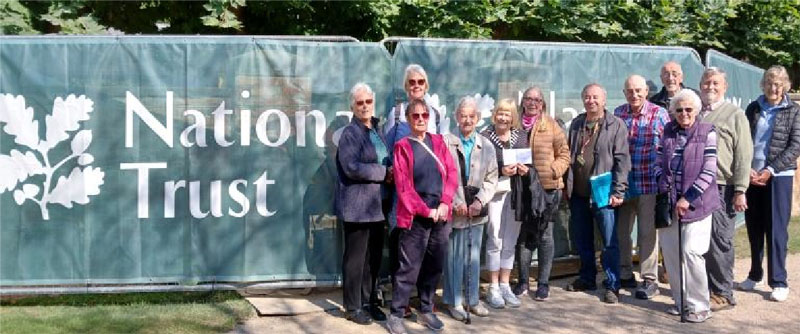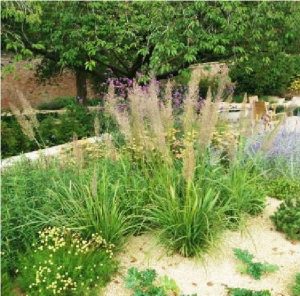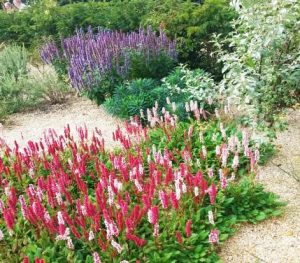
 The recently opened Mediterranean Garden was the highlight of our walk around the gardens at Beningbrough Hall on a brilliant sunny day in September, guided by Beningbrough volunteers, Kevin, aided by June, who are both also members of H&TDA. A series of low stone walls emerge from the sloping ground, while boulders around the garden give the flavour of a Mediterranean hillside. Winding paths reveal fresh viewpoints and hidden corners.
The recently opened Mediterranean Garden was the highlight of our walk around the gardens at Beningbrough Hall on a brilliant sunny day in September, guided by Beningbrough volunteers, Kevin, aided by June, who are both also members of H&TDA. A series of low stone walls emerge from the sloping ground, while boulders around the garden give the flavour of a Mediterranean hillside. Winding paths reveal fresh viewpoints and hidden corners.
 The work is the vision of award-winning garden designer, Andy Sturgeon, who had selected plants from Mediterranean climate zones around the world. that are better able to cope with hotter, drier summers and wetter winters. Drought-tolerant plants will need less watering, while the introduction of more free-draining soil, and additional drainage, will help manage intense rainfall. Andy is quoted as saying: “In the UK we can expect warmer summers with prolonged dry periods, but also an increase in very wet days. We need to start changing the way we garden, and I have taken the opportunity to embrace this at Beningbrough”
The work is the vision of award-winning garden designer, Andy Sturgeon, who had selected plants from Mediterranean climate zones around the world. that are better able to cope with hotter, drier summers and wetter winters. Drought-tolerant plants will need less watering, while the introduction of more free-draining soil, and additional drainage, will help manage intense rainfall. Andy is quoted as saying: “In the UK we can expect warmer summers with prolonged dry periods, but also an increase in very wet days. We need to start changing the way we garden, and I have taken the opportunity to embrace this at Beningbrough”
After lunch in the café we then made our way to the first floor of the house to see “The Botanical Work of Mary Delany”. I was expecting to see an exhibition of “modern” art but, no! Mary Delany was born in 1700, and did not actually start her artistic work until she was 72. She transformed ordinary materials into really inspirational artworks. Her “paper mosaiks” (sic) appeared as scientifically accurate botanical specimens. “I have invented a new way of imitating flowers”, Mary is quoted as saying in 1772. With just paper, paint and scissors, Mary Delany transformed ordinary materials into extraordinary, inspirational artworks. This was the first venue of an international tour arranged by the British Museum, who are guardians of her art works.
Sylvia Foxton
